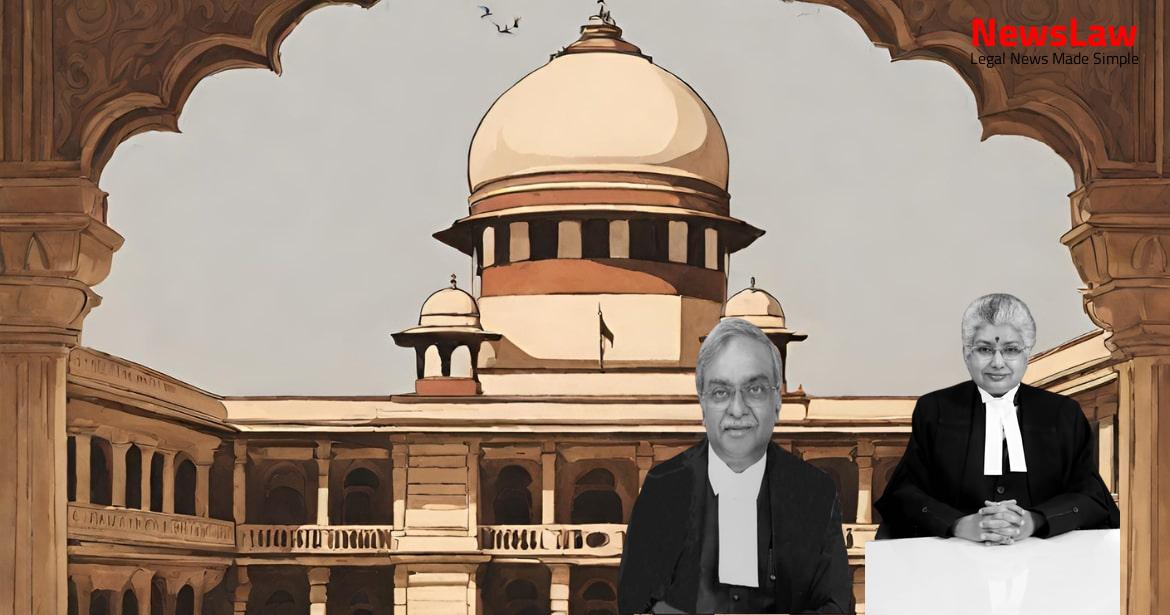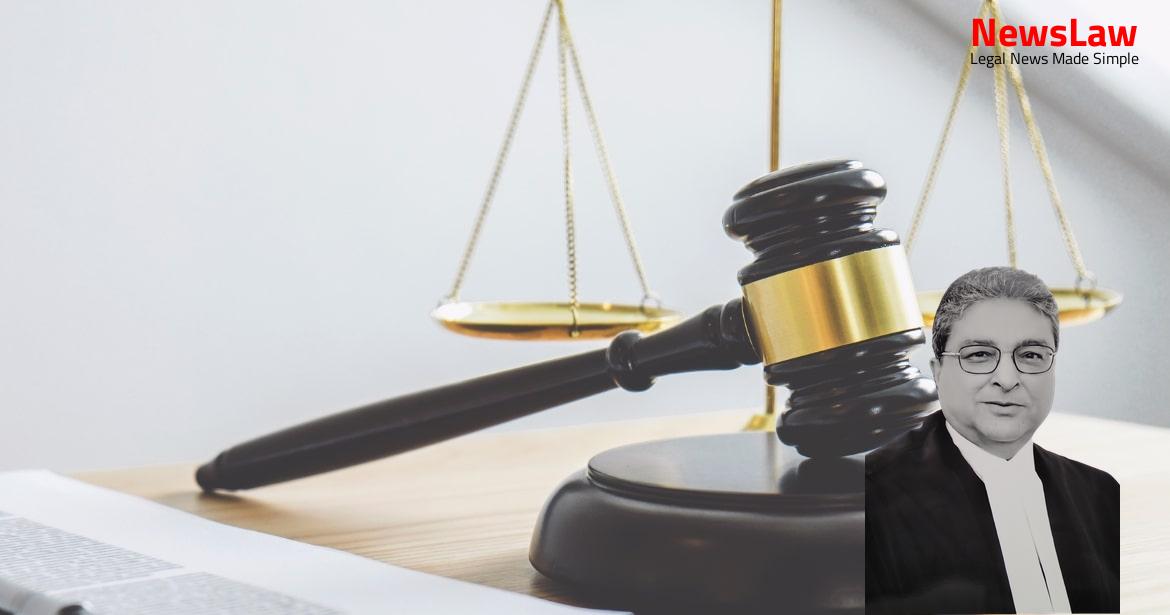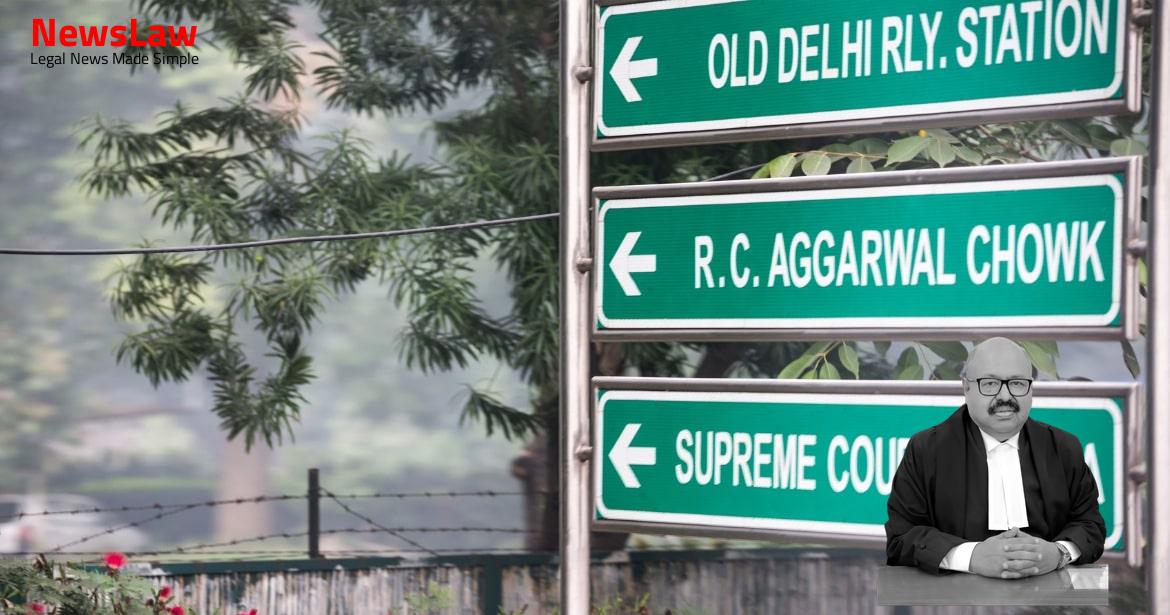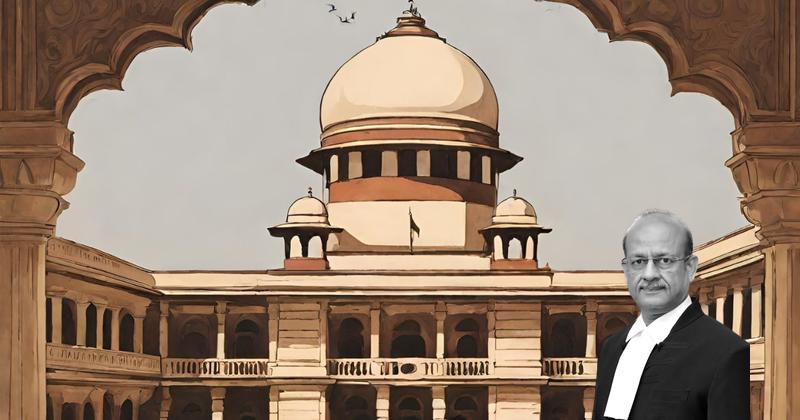Explore a detailed overview of a court’s legal analysis regarding the concept of common intention in a murder case. The court’s thorough examination of the evidence, including witness testimonies and motive, provides insight into the application of Section 34 of the IPC. This summary focuses on the intricate legal aspects of vicarious liability and the crucial role of establishing a prearranged plan in criminal proceedings.
Facts
- The incident took place near the drain under the Babool tree adjacent to the complainant’s field.
- Accused individuals were armed with firearms and were exhorted by one of the accused to kill the victims.
- Three individuals were shot dead on the spot, and the complainant’s nephew was also killed as he tried to intervene.
- Autopsies were conducted on the deceased and statements of witnesses were recorded.
- Charge-sheet was submitted against the accused under Section 302 read with Section 34 of the IPC.
- Accused claimed innocence and cited personal and electoral enmity for being falsely implicated.
- Complainant and witnesses were standing in fear as gunshots were fired to threaten them.
- Accused fled the scene after the killings, stating they had settled personal and electoral enmity.
- FIR was lodged against the accused the same day of the incident.
- Accused individuals were charged with murder under relevant sections of the IPC.
- The bodies of the deceased were sent for post-mortem.
- Trial court convicted and sentenced accused-appellants Inder Pal Singh and Ram Pal Singh alias Raja Beta based on oral evidence and material on record.
- High Court of Allahabad dismissed the appeals of accused Raj Bahadur Singh and Surender Pal Singh.
- Complaint did not assign a role to Accused No.2 Chetram in the attack on Udairaj during the incident.
- Solitary eye-witness PW1 gave an improved testimony in the FIR attributing an overt act to accused Chetram, which was not mentioned in his statement to the Investigating Officer under Section 161 of Cr.P.C.
- Accused were found guilty and sentenced based on the new testimony of PW1 in court implicating Chetram.
- Accused filed appeals before the High Court challenging their conviction and sentence.
- Accused were charged under Section 302 read with Section 34 of the IPC for committing murder of Atar Singh, Shivpal Singh, and Keshbhan Singh.
- Accused denied the prosecution story and claimed they were being implicated due to the ‘Will’ executed by the father of the complainant.
Also Read: Electoral Malpractices in Mayor Election
Arguments
- The appellant’s counsel argued for the acquittal of Surender Pal Singh based on lack of common intention between the accused.
- The respondent- State supported the prosecution’s case invoking Section 302 read with Section 34 of the IPC.
- There were inconsistencies in the testimony of eyewitnesses PW1 and PW2 regarding the involvement of the accused.
- The appellant’s counsel cited judgments where accused were acquitted due to contradictions and improvements in witness statements.
- The benefit of doubt was given to the accused Chetram in a case of homicidal death due to doubts about his involvement.
- The court had suspicion about the overt act of Chetram in the case.
- High Court’s judgment found no error in confirming the conviction and punishment awarded by the Sessions Court.
- The accused failed to provide any valid reason to explain why they were carrying weapons.
- The accused were carrying weapons with a common intention to commit the charged offences.
- The evidence of eye-witnesses PW1 and PW2 was consistent and reliable.
- The FIR No.817/1995 was found on the post-mortem reports, supporting the prosecution’s case.
- The prosecution’s case was found trustworthy and reliable with no material contradictions or improvements.
Also Read: Balancing Power and Transparency: Electoral Bonds Struck Down, Disclosure Mandated
Analysis
- Court relied on judgments of the Privy Council in Barendra Kumar Ghose and Mahbub Shah vs. Emperor, as well as a three Judge Bench decision in Pandurang vs State of Hyderabad.
- To apply section 34 of the IPC, prosecution must prove the existence of common intention with a prearranged plan.
- Vicarious conviction for a criminal act of another requires the act to be in furtherance of common intention of all.
- In the absence of a prearranged plan and common intention, individuals attacking a man would be individually liable for their own actions, without vicarious liability.
- Consistent testimonies of PW1 and PW2 demolish the case against Surender Pal Singh
- The complainant stated that all accused were armed with firearms and exhortations were made to kill the victims
- Common intention of the accused was established based on the evidence
- Antecedent enmity and property disputes were highlighted as motives
- Accused were charged under Section 302 with common intention invoked
- Details of the incident and weapon use were consistent in testimonies
- Autopsy reports confirmed gunshot injuries on the deceased
- The victims sustained injuries due to firearms on the exhortation of the accused Rajbahadur Singh.
- Surender Pal Singh did not have a separate defense to challenge the prosecution’s case against him.
- Enmity arose from a succession dispute over property, leading to false implication of the accused.
- No explanation for why all four assailants came together, three with firearms and one with a stick.
- Complaint was filed promptly after the incident, providing sufficient grounds for FIR under relevant sections.
- Related witnesses’ testimony was considered credible and consistent by the High Court.
- Accused did not raise an alibi defense during questioning.
- Investigation details, including recovery of blood-stained items and arrest of accused, supported prosecution’s case.
- Defense’s contentions against the evidence of Investigating Officer were not found substantial.
- Previous judgments cited by the defense were deemed inapplicable to the current case.
- Appeals were dismissed, and the conviction of the appellants was upheld.
Also Read: Recall of Resolution Plan Approval: Legal Analysis
Decision
- Ram Pal Singh was granted bail on 16.03.2020.
- Inder Pal Singh (A-1) was granted remission by the Governor of Uttar Pradesh on 19.11.2013 and does not need to surrender. His sentence is reduced to the period already undergone.
- Surender Pal Singh (A-3) was granted exemption from surrendering by this Court on 07.01.2019.
- Ram Pal Singh is directed to surrender before the concerned jail authority to serve the remainder of the sentence; the bail bond stands cancelled.
Case Title: INDRAPAL SINGH Vs. THE STATE OF UTTAR PRADESH (2021 INSC 513)
Case Number: Crl.A. No.-000313-000314 / 2020



